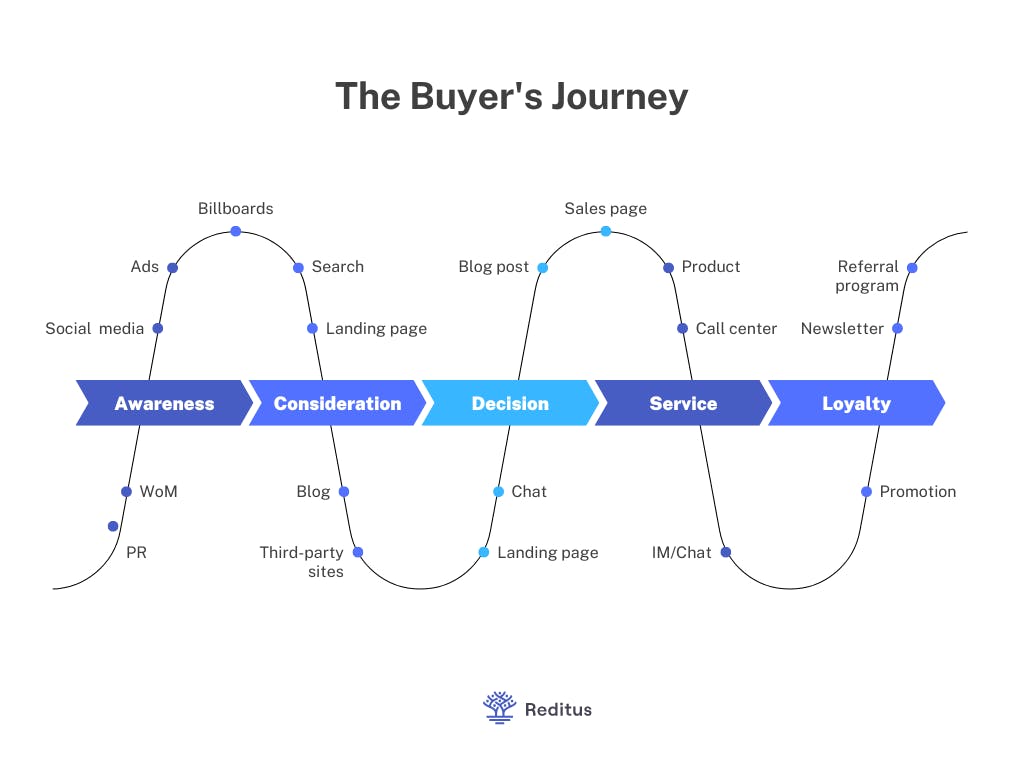What Is a Complex Sale? A Complete Guide for SaaS Sales Teams

The modern sales process is significantly more complex than it used to be. Today's buyers are armed with more information than ever before, and they demand a high level of transparency from the vendors they do business with.
As a result, selling software as a service (SaaS) products has become much more challenging for sellers, especially those operating in what some have dubbed the "new era of software sales."
With that said, there are also numerous benefits to selling complex sales processes. Complex sales are often high-value and require professional services or multiple points of contact within an organization.
When you know how to navigate these challenges, you can drive even more value from your sales strategy and see better results.
Here's everything you need to know about complex sales and how you can implement them in your own SaaS company.
Table of contents
What Is a Complex Sale?
A complex sale is any sales process that is more involved than the average sale. Many factors can contribute to a sale's complexity, but one of the biggest is the size of the potential order.
It's common for large enterprises to bring in new vendors and services on a large scale, making the buying process more complicated.
Another factor that can make a sale more complex is the number of stakeholders involved in the process. In many cases, multiple people are involved in the decision-making process, each with specific objectives and priorities.
For instance, the person responsible for the budget may be focused on getting the best price, while the person in charge of operations might be more concerned with ease of use and implementation.
The more stakeholders there are, the harder it can be to reach a consensus and move forward with a purchase.
In the end, a complex sale is simply any sale that requires more time, effort, and resources to close.
Why Are Sales Processes Becoming More Complex?
As buyers have gained more power and confidence, they have developed a more robust sales process. This is due to several factors, including the availability of more data and the increased ease with which they can share that information.
With buyers having more information than ever, they have begun to expect greater transparency from the vendors they purchase from. These expectations have brought about a new era of software sales that require sales teams to adjust their strategies accordingly.
You could miss much potential revenue if your team does not make adjustments. If you are selling software as a service (SaaS) products, you're likely to come across many complex sales.
This is because SaaS products are typically recurring subscription-based models, which means that there is a lot more at stake for the buyer.
They need to be confident that they are making a sound investment that will continue to pay off over time, making the decision-making process more complex.
Additionally, many SaaS products require a high degree of customization and integration to be effective. This can add to the complexity of the sale, as buyers need to be confident that the product will meet their specific needs.
Finally, SaaS products are often purchased by teams rather than individuals. This means that there are likely to be multiple stakeholders involved in the decision-making process, each with their own objectives.
As a result, it's essential to have a sales strategy that considers all of these factors.
How To Build a Successful Sales Process for High-Value Customers
Now that we've covered what a complex sale is and why they are becoming more common, let's look at how you can build a successful sales process for high-value customers.
Step 1. Define Your Buyer Personas
The first step is to understand your buyer. This means taking the time to research their specific needs and objectives.
One way to do this is to create buyer personas. A buyer persona is a fictional character that represents your ideal customer.

By creating a buyer persona, you can better understand whom you are selling to and their specific needs. This will help you to tailor your sales process to their individual needs.
To create a buyer persona, start by collecting data on your current and past customers. This data can be gathered through surveys, interviews, and customer feedback forms.
Once you have this data, you can create a profile for your buyer persona. Include their age, gender, job title, and pain points.
Once you have a clear understanding of who your buyer persona is, you can begin to adjust your sales process accordingly.
Step 2. Identify the Decision-Makers
Another essential step in the sales process is to identify the decision-makers. This can be tricky, as multiple stakeholders are often involved in complex sales.
The best way to identify the decision-makers is to ask your contact at the company. If they cannot give you a clear answer, you can try to find out through research.
LinkedIn can be a valuable tool for this, as you can use it to see who works at the company and what their job title is.
Once you have identified the decision-makers, you can begin to tailor your sales pitch to their specific needs and objectives.
Step 3. Create a Custom Proposal
The next step is to create a custom proposal. You should tailor this proposal to the buyer's and their company's specific needs.
Include information such as what problem the product will solve, how you will implement it, and what the ROI will be.
It's also essential to address any objections that the buyer might have. For example, if they are concerned about the price, include information on how the product will save them money in the long run.
Step 4. Understand the Buying Process
Another critical step in the sales process is understanding the buyer's purchasing process. This includes understanding how decisions are made within their company.
To do this, you can ask your contact at the company or try to find out through research. LinkedIn can be a valuable tool for this, as you can use it to see who works at the company and what their job title is.

Once you clearly understand the buyer's purchasing process, you can adjust your sales strategy accordingly.
For instance, if you know the buyer is likely to need approval from their boss before making a purchase, you can focus your pitch on the product's benefits for their company.
Step 5. Build a Relationship With the Buyer
Finally, it's essential to build a strong relationship with the buyer. This means taking the time to get to know them and understand their needs.
It's also important to keep in touch with them after the sale. This will help to ensure that they are happy with the product and that they continue to use it in the future.
What's more, if you have a good relationship with the buyer, they are more likely to come back to you in the future when they need to purchase another product.
Ultimately, the sales process is about understanding the buyer's needs and catering to them. By following these steps, you can be sure that you are giving them the best possible service.
Pitfalls to Avoid During the Sales Process
Many salespeople make the mistake of thinking that the sales process is linear. However, this is not the case.
The sales process is a spiral, which means that it is constantly changing and evolving. This can be tricky to keep up with, but it's essential to be aware of the ever-changing nature of the sales process.
Before we dive into the specific steps you need to take to succeed in the sales process, let's first take a look at some of the common mistakes salespeople make.
Pitfall 1. Not Nurturing Leads
One of the salespeople's most common mistakes is not nurturing their leads. This means they don't keep in touch with their leads after they have been generated.
Lead nurturing is essential because it helps to keep your company top of mind. It also allows you to build a relationship with the lead and establish trust.

For example, you can nurture your leads by sending them helpful information, such as blog posts or eBooks. You can also stay in touch with them through email or social media.
Ultimately, lead nurturing is about keeping your company top of mind and building trust.
Pitfall 2. Not Qualifying Leads
Another common mistake that salespeople make is not qualifying their leads. This means they don't take the time to determine whether or not a lead is interested in purchasing their product.
Qualifying your leads is essential because it helps you focus your time and energy on the right people.
For example, if you know that a lead is not interested in your product, there's no point in trying to sell to them.
Qualifying your leads also allows you to save time by only pitching to those who are interested in what you have to offer.
Pitfall 3. Not Understanding the Buyer's Needs
Another mistake salespeople make is not taking the time to understand the buyer's needs. This means they don't take the time to understand what the buyer wants or how they make decisions.
Understanding the buyer's needs is essential because it allows you to tailor your pitch accordingly.
For example, if you know that the buyer is looking for a product that is easy to use, you can focus your pitch on the simplicity of your product.
Pitfall 4. Not Using Data to Make Decisions
Finally, salespeople make another mistake: not using data to make decisions. This means that they don't track their progress or use analytics to determine what is working and what isn't.
Data is essential because it allows you to see what is working and what isn't. It also allows you to correct course if necessary.
For example, if your close rate is low, you can use data to figure out why this is the case.
You can then make changes to your sales process accordingly.
Pitfall 5. Not Following Up With Buyers
Finally, one last mistake salespeople make is not following up with their buyers after the sale. This means they don't take the time to thank the buyer or check in to see how they are doing.
Following up with buyers is important because it allows you to build relationships with them. It also allows you to ensure that they are satisfied with their purchase.
For example, you can follow up with buyers by sending them a thank-you note or checking in to see how they use your product.
By following up with buyers, you can be sure that they are happy with their purchase and will think of you when they need to purchase another product in the future.
Conclusion
In conclusion, the modern sales process is ever-changing. To succeed in the sales process, you need to take the time to understand your buyer, qualify your leads, and use data to make decisions.
Moreover, it's essential to follow up with your buyers after the sale and nurture your leads throughout the entire process.
By following these tips, you can be sure that you are well on your way to success in the modern sales process.

